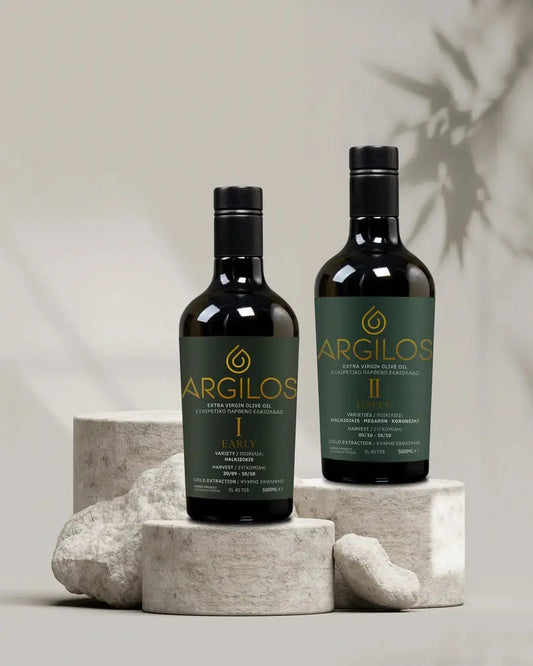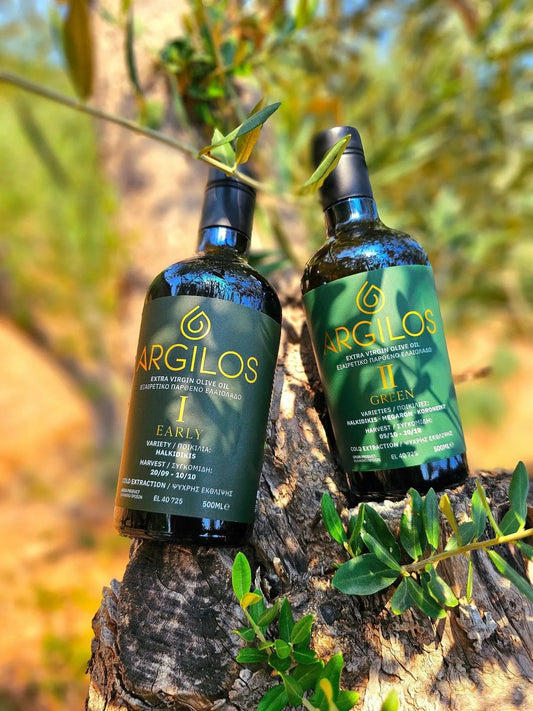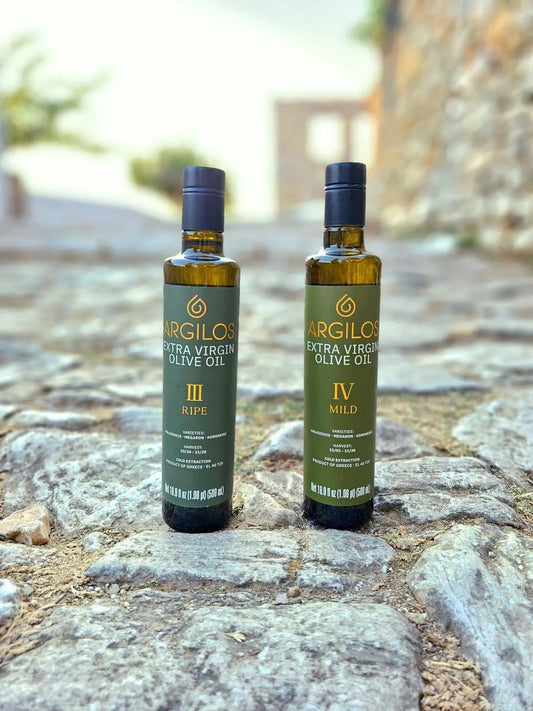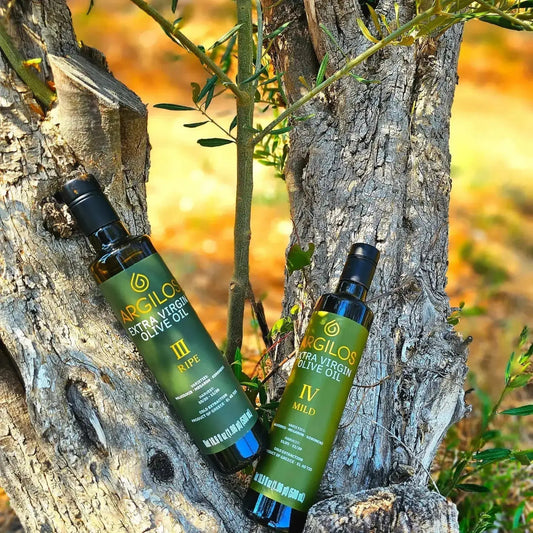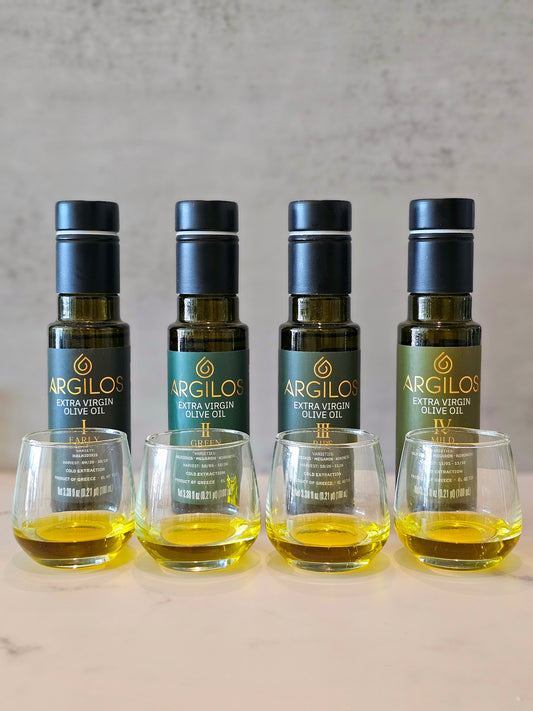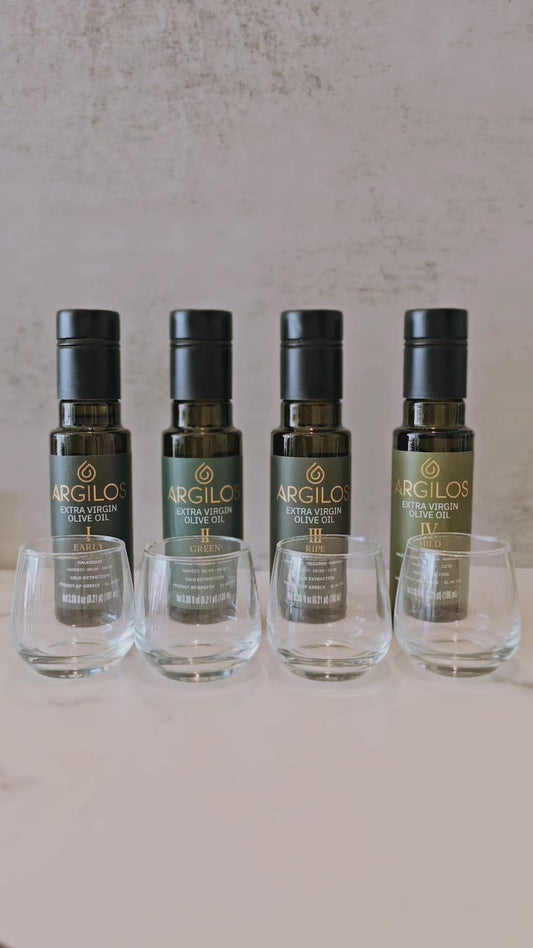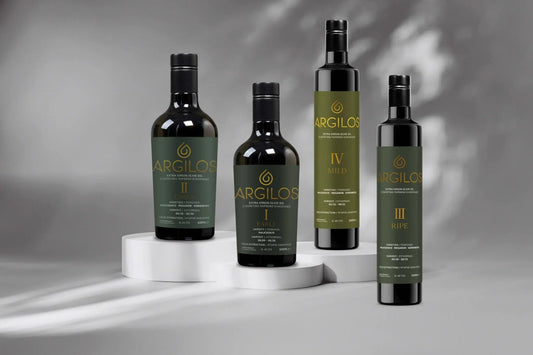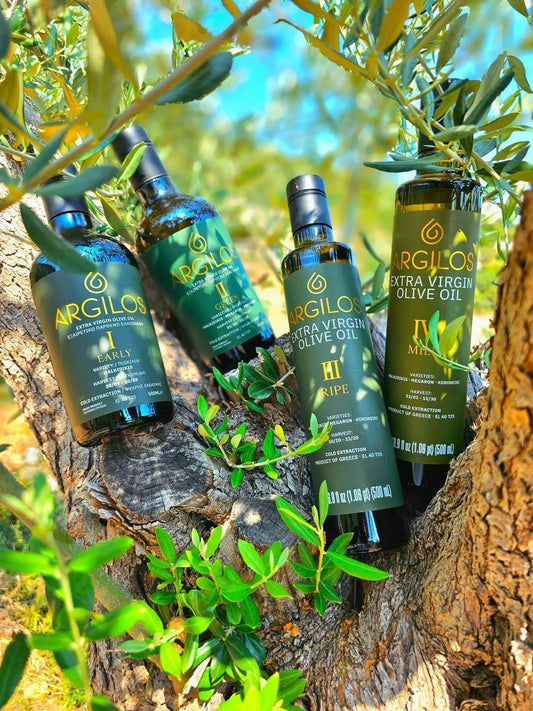Bioavailability 101: Unlocking the Power of Nutrients in Your Diet
Share

In today's health-conscious world, we often hear about the importance of eating nutrient-rich foods. But did you know that not all nutrients are created equal when it comes to how your body uses them? That's where bioavailability comes in. This beginner's guide to bioavailability will break down what it means, why it matters, and how you can optimize it for better health. Whether you're drizzling extra virgin olive oil on your salad or incorporating more whole foods into your meals, understanding bioavailability can help you make smarter dietary choices.
At Nostos Goods, we're passionate about delivering premium products like our Argilos Greek Extra Virgin Olive Oil, sourced from ancient groves in Mount Pangaion. Rich in polyphenols, these oils aren't just flavorful—they're designed with your wellness in mind. Let's dive into the basics.
What Is Bioavailability?
Bioavailability refers to the proportion of a nutrient or compound that is absorbed into your bloodstream and becomes available for your body to use. In simple terms, it's not just about what you eat, but how much of it actually reaches the cells and tissues where it's needed. For example, while a food might be packed with vitamins, minerals, or antioxidants, factors like digestion and metabolism determine how effectively those benefits are delivered. On the basis of intake data and isotope studies, iron bioavailability has been estimated to be in the range of 14-18% for mixed diets and 5-12% for vegetarian diets.
Think of it like this: If you consume 100mg of a nutrient, bioavailability tells you how much—say, 50mg or 80mg—actually gets utilized. This concept is crucial in nutrition because it explains why some superfoods deliver more punch than others. Polyphenols, the powerful antioxidants found in foods like extra virgin olive oil, are a prime example. Studies show that compounds like hydroxytyrosol and tyrosol in olive oil are highly bioavailable, meaning they absorb well and provide anti-inflammatory and heart-healthy effects. Bioavailability studies in humans show that the absorption of olive oil phenols is probably larger than 55-66 mol%, and that at least 5% is excreted in urine as glucuronides.
Factors Influencing Bioavailability
Several elements can affect how well your body absorbs nutrients. Understanding these can help you tweak your diet for maximum impact:
- Chemical Structure: The form of the nutrient plays a big role. For instance, polyphenols in olive oil are often bound to fats, which can enhance their absorption compared to water-soluble versions in other foods. Fat-soluble vitamins (A, D, E, K) require dietary fats for proper absorption, and without them, a significant portion may pass through the body unused.
- Food Matrix: Nutrients don't exist in isolation. The presence of fats, fibers, or other compounds in a food can either boost or hinder absorption. Cooking vegetables with olive oil, for example, can increase the bioavailability of fat-soluble vitamins like A, D, E, and K. Vitamin C can enhance the absorption of non-heme iron from plant sources by up to 2-3 times when consumed together.
- Individual Differences: Your age, gut health, genetics, and even medications can influence bioavailability. A healthy microbiome aids in breaking down compounds like polyphenols for better uptake. For instance, studies indicate that bioavailability of micronutrients can vary significantly based on physiologic states like infancy, childhood, or adolescence.
- Processing and Preparation: Raw vs. cooked, whole vs. processed—these choices matter. Virgin olive oil, which is minimally processed, retains more bioavailable phenols than refined versions. In general, vitamins in foods originating from animals are more bioavailable than those from plants, with comparative studies showing higher absorption rates for animal-sourced nutrients.
By recognizing these factors, you can start making informed decisions. For more insights on how processing affects food quality, check out our Argilos Olive Diary blog.
Ways to Improve Bioavailability
The good news? You can enhance nutrient absorption with simple strategies. Here are some practical tips backed by research:
- Pair Foods Wisely: Combine nutrients with enhancers. Drizzle extra virgin olive oil on salads to boost the absorption of carotenoids from veggies. This synergy is why Mediterranean diets, rich in olive oil, are linked to better health outcomes. For example, pairing vitamin C with iron-rich foods like spinach can increase iron absorption significantly, especially in plant-based meals.
- Choose High-Quality Sources: Opt for foods with naturally high bioavailability. Our Argilos Greek Extra Virgin Olive Oil is cold-pressed to preserve polyphenols, ensuring you get the most from every drop. Supplements with clean, bioavailable forms are preferable, as low-quality ones may have absorption rates as low as 5-10% for certain minerals.
- Incorporate Healthy Fats: Fats improve the uptake of fat-soluble compounds. Adding olive paste to meals can amplify this effect—explore our Olive Paste Collection for flavorful ideas. Taking fat-soluble vitamins with healthy fats like EVOO can enhance absorption by up to 60% in some cases.
- Mind Your Gut Health: Probiotics and fiber support a microbiome that breaks down nutrients efficiently. Recipes using olive oil can help; try our Mediterranean-inspired recipes for gut-friendly meals. A balanced gut can improve overall micronutrient bioavailability by 20-30% through better digestion.
- Avoid Inhibitors: Limit things like excessive caffeine or certain minerals that compete for absorption. Balance is key. Taking vitamins with food rather than on an empty stomach can prevent reduced efficacy and side effects like nausea.
Implementing these can transform your nutrient intake. If you're looking to elevate your routine, consider our bundle deals for a complete olive experience—visit our Argilos Bundle Deals.
Bioavailability in Extra Virgin Olive Oil: A Closer Look
Extra virgin olive oil stands out for its exceptional bioavailability of phenolic compounds. Research indicates that the oil matrix itself enhances the accessibility of these antioxidants, leading to higher absorption rates. Virgin olive oil is characterized by a wide diversity of phenolics and high total phenolic content ranging from 110 to 900 mg caffeic acid equivalents per kg. Polyphenols like those in our single-origin Argilos oil from Halkidiki olives offer fruity, herbal flavors alongside proven health perks, from reducing inflammation to supporting cardiovascular health.
Unlike many supplements, the natural form in olive oil means better bioavailability without additives. Bioavailability assays reveal that phenolics from extra-virgin olive oil are absorbed in a proportion of 55–60%. This is why incorporating high-polyphenol olive oil into your daily diet can be a game-changer. For a truly personal touch, join our Adopt an Olive Tree program and receive oil straight from your tree.
FAQ: Common Questions About Bioavailability
Here, we address some frequently asked questions about bioavailability to help clarify this essential nutrition concept. These insights are drawn from scientific sources to ensure accuracy.
What is bioavailability in nutrition?
Bioavailability is the fraction of a nutrient that is absorbed and becomes available for use or storage in the body after digestion. It's not just about intake but effective utilization, which varies by food source and individual factors.
Why is bioavailability important?
High bioavailability ensures you get the maximum health benefits from your diet or supplements, preventing deficiencies and optimizing wellness. For instance, low bioavailability can mean even nutrient-rich foods don't deliver as expected, with absorption rates as low as 5-12% for iron in vegetarian diets.
How can I improve the bioavailability of nutrients?
Pair foods strategically, like adding fats such as extra virgin olive oil to enhance absorption of vitamins. Maintain gut health, choose whole foods, and minimize processing. Explore our recipes for practical ideas.
What's the difference between bioavailability and absorption?
Absorption is the process of nutrients entering the bloodstream, while bioavailability includes absorption plus how much is metabolized and available for use. Bioavailability is a broader measure.
Does bioavailability differ between foods and supplements?
Yes, nutrients from whole foods often have better bioavailability due to natural synergies, unlike isolated supplements which may require enhancers. Our Argilos Greek Extra Virgin Olive Oil exemplifies this with its bioavailable polyphenols.
How does cooking affect nutrient bioavailability?
Cooking can enhance bioavailability for some nutrients (e.g., lycopene in tomatoes) but reduce it for others (e.g., vitamin C). Using olive oil in cooking often boosts overall absorption.
Is the bioavailability of polyphenols in olive oil high?
Absolutely—extra virgin olive oil's fat matrix makes polyphenols highly bioavailable, supporting anti-inflammatory effects. Absorption rates can exceed 55%, with peak concentrations reached within 1-2 hours. Check out our Argilos Olive Diary for more on olive oil benefits.
Conclusion: Empower Your Health with Bioavailable Nutrients
Mastering bioavailability is about getting the most from your food, not just consuming more. By focusing on quality sources like premium extra virgin olive oil, you can enhance nutrient absorption and support long-term wellness. At Nostos Goods, we're committed to transparency and traceability, ensuring every bottle delivers optimal benefits.
Ready to experience the difference? Shop our Argilos Greek Extra Virgin Olive Oil today and elevate your nutrition game.
References
- Bioavailability 101: Are Your Vitamins Working as Hard as You Are?
- Bioavailability of Micronutrients From Nutrient-Dense Whole Foods
- Nutrient Bioavailability - an overview | ScienceDirect Topics
- Bioavailability of Dietary Supplements and Impact of Physiologic State
- Bioavailability of Nutrients - Principles of Nutritional Assessment
- Comparative bioavailability of vitamins in human foods sourced from ...
- Bioavailability of micronutrients obtained from supplements and food
- (PDF) Bioavailability of Nutrients - ResearchGate
- Polyphenols, the Healthy Brand of Olive Oil: Insights and Perspectives
- Bioavailability of the Polyphenols: Status and Controversies - PMC
- An Extra-Virgin Olive Oil Rich in Polyphenolic Compounds Has ...
- Virgin Olive Oil Phenolic Compounds: Insights on Their Occurrence ...
- Bioavailability and antioxidant effects of olive oil phenols in humans
- Bioavailability of phenols from a phenol-enriched olive oil
- Bioavailability and antioxidant effects of olive oil phenols in humans

